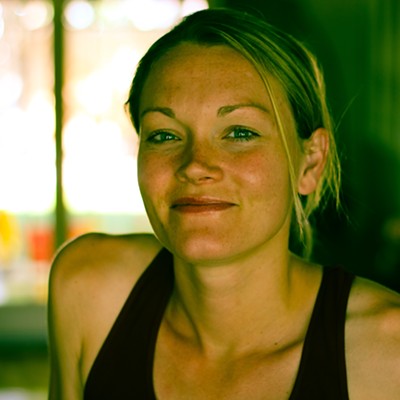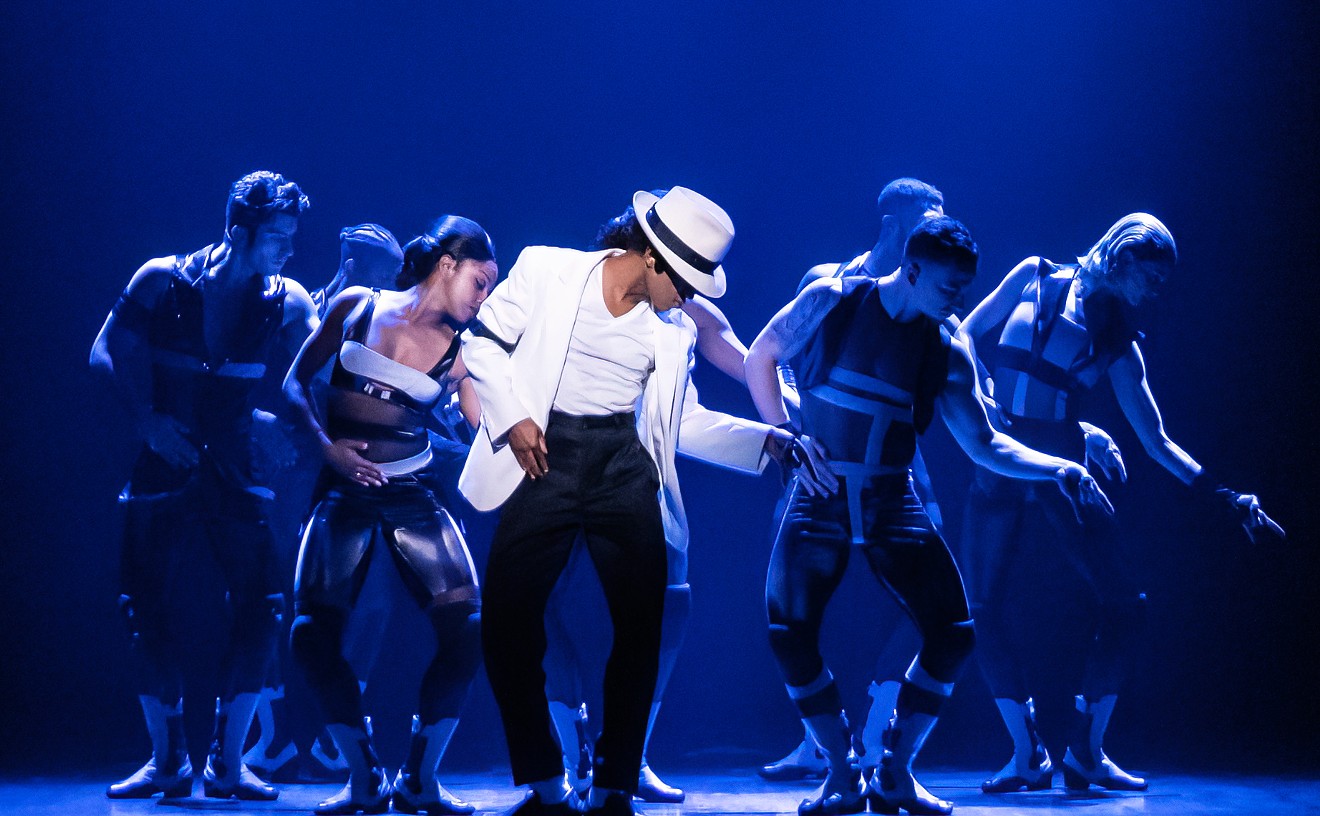You can find art all over town — not just on gallery walls. In this series, we'll be looking at some of the local artists who serve up their work in coffeehouses and other non-gallery businesses around town.
Library data may not seem aesthetically pleasing, but artist Duncan Parks is intent on making it look so stunning that viewers might even call it art. The recent college graduate built a drawing machine for his undergraduate thesis at Colorado State University, and now he’s at it again at the Ross-Broadway Branch Library, where he’s the library’s first-ever artist-in-residence.
The new residency program is funded by a grant, and in early November Parks was selected to be the library’s sponsored artist for this month. Every Saturday in December, from 9 a.m. to 1 p.m., Parks will show off his newest drawing machine. And at 2 p.m. on Saturday, January 23, the library is hosting a special reception where Parks will unveil all of the drawings produced during his month-long tenure.
This past Saturday, Parks made his first attempt at using his drawing machine in public — but the results weren’t exactly what he’d been hoping for. “I got it moving, but it isn’t quite drawing yet,” he says. “There are still bugs to work out.”
The drawing machine, Parks explains, “is a polargraph. The drawing apparatus is suspended from two pulleys with motors that are mounted on the top corners of the drawing. A microcontroller signals to the apparatus, and tells it to draw.” Although it sounds complicated, “I bought a kit that solved most of the hard problems for me,” Parks says. “But I’ve been fighting with the software.”
Parks’s goal is to use portions of the library’s collection of visual databases to power his drawing machine. “The digital collection is a big part of the project,” he explains. “I wanted to make a machine that would access and search the collection, in some sense of the word.”
He's currently building “an accompanying piece of software that will give drawing input from a touch screen, and use that to form a search criteria to look through the material that’s available to the public in the library’s database,” he says. The machine should eventually be able to pull images from specific image sets within the database, and those images will be used to make drawings.
“These image sets involve old photographs of architecture in Colorado,” Parks says, noting that he picked particular collections because "it was a nice combination of the built world and the natural world. I thought that was an interesting parallel to the process of traditional and digital practices intersecting.”
So what will these finished drawings look like? “I’m not entirely sure yet,” the artist admits.
“It’s going to be some combination of machine drawing, and then me working into the composition the way that I’ve worked with found imagery or material experiments,” Parks notes. In the past he’s used abstract ink washes and his own handwork to create hybrid pieces. “I’m hoping to explore a process like that again,” he says.
Parks graduated from CSU with a BFA in drawing in 2014. But towards the end of school, he focused on digital fabrication, and he's experimented with a wide range of techniques and mediums. He's shown his work at Good Thieves Press, where he joined a robot art show and used his first drawing machine, the one created at CSU.
Parks isn’t entirely sure why he’s so interested in drawing machines. “I like building machines, and I like drawing,” he says. “Drawing machines seem like the simplest step into the world of digital fabrication, and there’s something nice about approaching that territory from the simplest means possible."
For more information on Parks and his work, visit his website.
[
{
"name": "Air - MediumRectangle - Inline Content - Mobile Display Size",
"component": "12017618",
"insertPoint": "2",
"requiredCountToDisplay": "2"
},{
"name": "Editor Picks",
"component": "17242653",
"insertPoint": "4",
"requiredCountToDisplay": "1"
},{
"name": "Inline Links",
"component": "18838239",
"insertPoint": "8th",
"startingPoint": 8,
"requiredCountToDisplay": "7",
"maxInsertions": 25
},{
"name": "Air - MediumRectangle - Combo - Inline Content",
"component": "17261320",
"insertPoint": "8th",
"startingPoint": 8,
"requiredCountToDisplay": "7",
"maxInsertions": 25
},{
"name": "Inline Links",
"component": "18838239",
"insertPoint": "8th",
"startingPoint": 12,
"requiredCountToDisplay": "11",
"maxInsertions": 25
},{
"name": "Air - Leaderboard Tower - Combo - Inline Content",
"component": "17261321",
"insertPoint": "8th",
"startingPoint": 12,
"requiredCountToDisplay": "11",
"maxInsertions": 25
}
]











